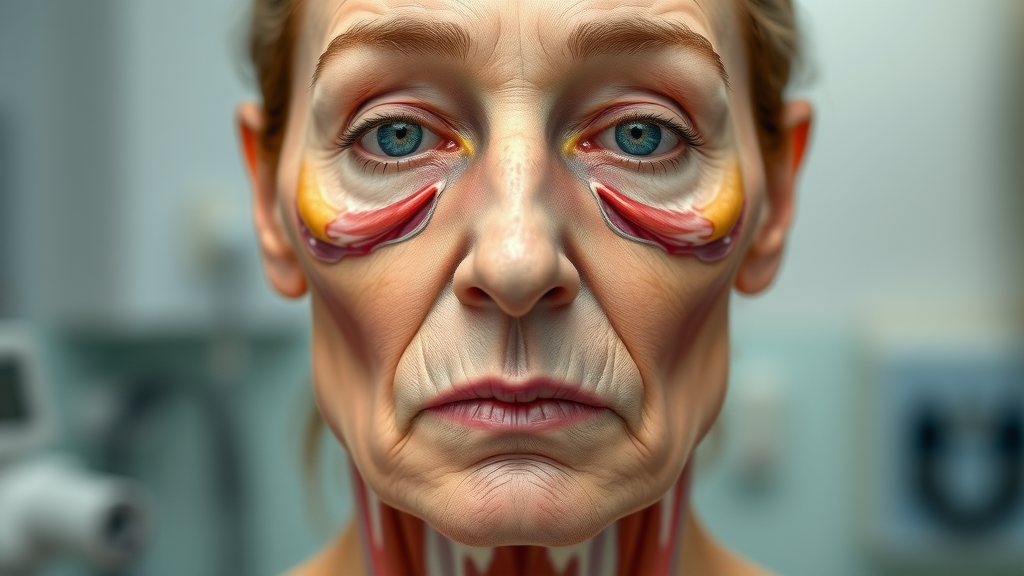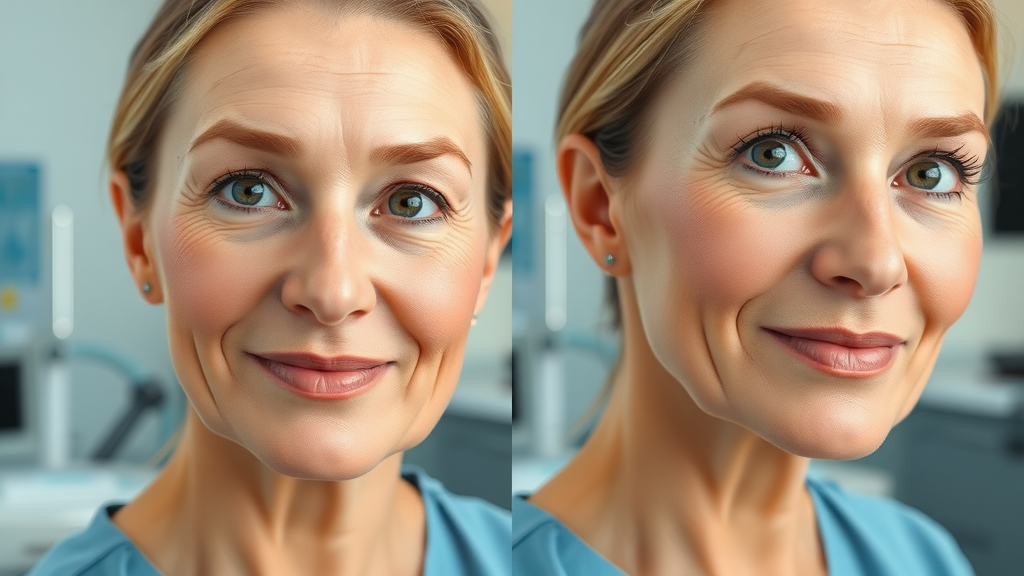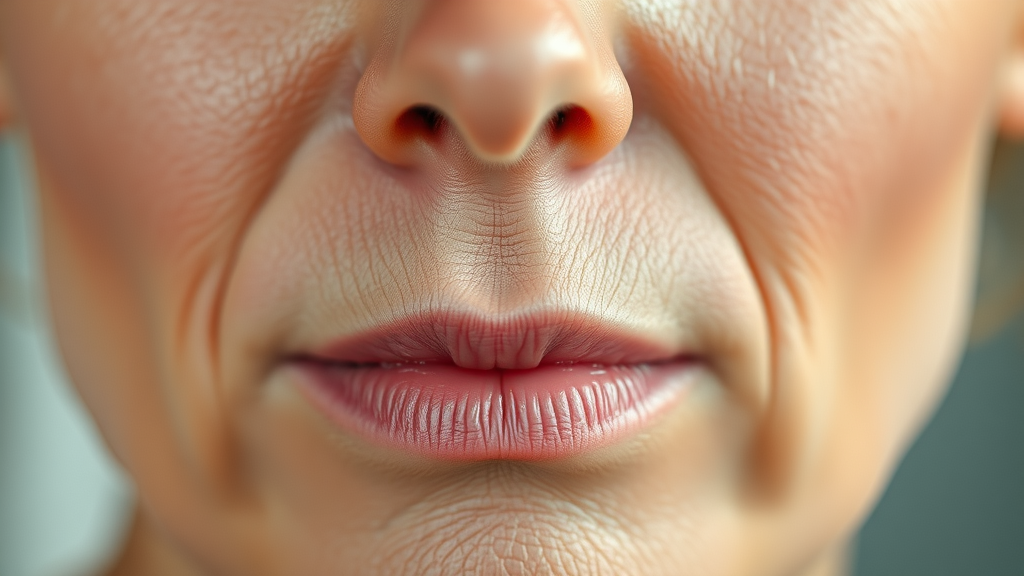Did you know that by the age of 50, more than 80% of women notice a significant change in their facial structure, particularly around the jawline? This startling statistic highlights the importance of understanding how to get rid of jowls on face. If you're concerned about sagging jowls, you're not alone. Dive in as we explore various effective methods to rejuvenate your facial appearance and boost your confidence.
Understanding Jowls: The Journey to a Firmer Face
Jowls are one of the most common signs of aging, characterized by sagging skin that droops below the jawline. This sagging occurs when the skin loses elasticity and begins to stretch or slacken. Recognizing the **causes of sagging jowls** can be the first step toward finding effective solutions.
What Causes Sagging Jowls?
**Sagging jowls** are primarily the result of various factors that affect the skin's natural support system, including collagen and elastin. Over time, the **loss of volume** in the face contributes significantly to sagging skin. Factors such as genetics, gravity, and lifestyle choices like smoking and excessive sun exposure only exacerbate the issue. Understanding these causes can help you tailor your approach to tackling jowls effectively.

The Impact of Aging on Face Structure
Aging naturally affects the **structure of the face** by progressively reducing the elasticity of the skin. As we age, the layers of the skin thin, leading to **loose skin** around the jawline and neck area. This is often accompanied by a loss in **collagen production**, a crucial protein that maintains skin tightness and elasticity. As a result, the skin becomes more prone to sagging and other age-related changes.
Key Factors Contributing to Sagging
The most prominent factors contributing to jowl formation include **sun damage**, which accelerates skin aging, and **weight loss**, which can lead to the appearance of excess skin. Additionally, poor diet and hydration can weaken the skin's natural resilience, while habits like smoking can lead to **skin laxity** and accelerate the formation of jowls.
Exploring Non-Surgical Methods to Get Rid of Jowls
While surgical options are available for jowl removal, non-surgical methods offer a less invasive alternative with varying degrees of effectiveness. These methods often focus on strengthening underlying facial muscles and increasing skin elasticity.
Facial Exercises: Strengthening the Jawline
Engaging in regular **facial exercise** can help redefine the jawline by targeting and strengthening **facial muscles**. These exercises can improve muscle tone within the lower face and reduce the **appearance of sagging skin**. Simple movements such as chin lifts, neck stretches, and cheek raises can contribute significantly to maintaining a firmer appearance.

Dermal Fillers as a Temporary Solution
**Dermal fillers** provide immediate, though temporary, relief from sagging jowls by restoring the **lost volume** of the face. Injectables such as hyaluronic acid can fill out areas with lost collagen, providing lift and contour to a drooping jawline. These fillers act to **tighten the skin** in the targeted areas, giving a more youthful appearance.
The Role of Weight Loss and Diet
While **weight loss** can sometimes lead to sagging due to the loss of fat that supports the skin, balanced nutrition plays a crucial role in maintaining skin health. A diet rich in antioxidants, omega-3 fatty acids, and plenty of water can bolster the skin’s natural production of collagen and elastin, helping to firm the skin over time.

Lifestyle Changes for Long-Term Results
Incorporating small yet impactful lifestyle changes can lead to significant improvements in facial structure over time. Maintaining a regular skincare routine focused on hydration and sun protection can slow down the signs of aging. Additionally, reducing harmful habits such as smoking and excessive alcohol consumption can contribute to healthier and more resilient skin.
Surgical Procedures: A Permanent Solution
When non-surgical options fall short, surgical procedures provide a permanent solution to achieving a **full facelift**. Here, we discuss the options available and what they entail.
Mini Facelift: A Less Invasive Option
The **mini facelift** targets the **lower face** and jowl area specifically, offering a less invasive alternative to a **full facelift**. This procedure is ideal for those with mild to moderate sagging and minimal recovery time needs. It involves smaller incisions, focusing on tightening **facial muscles** for a more youthful look.
Full Facelift for a Comprehensive Lift
A **full facelift** addresses sagging across the entire face and neck, providing the most dramatic and long-lasting results. This surgical procedure typically involves repositioning underlying tissue layers, lifting **excess skin**, and enhancing the facial profile for a renewed appearance. Though the recovery process may be longer, the extensive results achieved are often worth the time and effort invested.

Neck Lift: Addressing Jowls and Neck
A **neck lift** is often performed alongside a facelift to ensure harmony of facial contours. This procedure focuses on reducing **loose skin** and excess fat around the neck and jawline, enhancing the definition of the neck and chin. By addressing both areas simultaneously, a **neck lift** effectively eliminates jowls, providing a seamless, youthful profile.
Comparing Treatment Options
| Treatment Options | Advantages | Disadvantages |
|---|---|---|
| Facial Exercises | Non-invasive, cost-effective, gradual results | Requires consistency and patience |
| Dermal Fillers | Immediate results, minimally invasive | Temporary, requires regular touch-ups |
| Mini Facelift | Less invasive surgery, quicker recovery | Limited to specific areas, less dramatic results |
| Full Facelift | Most dramatic, comprehensive results | Longer recovery time, more invasive |
| Neck Lift | Enhances neck and jawline definition | Invasive, with associated risks |
Making the Right Choice for You
Choosing the appropriate **treatment option** largely depends on individual goals, the severity of sagging, and personal preferences. Consultation with a certified dermatologist or **plastic surgeon** can greatly assist in making an informed decision, ensuring safety and satisfaction with the outcome.
The Psychological Impact of Getting Rid of Jowls
"Removing jowls not only enhances one's appearance but significantly boosts personal confidence and social interactions," says leading dermatologist Dr. Jane Doe.
Resolving jowls has been shown to positively impact one's mental health, elevating overall **personal confidence** and facial aesthetics. Many individuals report a renewed sense of self-esteem post-treatment, underlining the importance of these aesthetic decisions.
Experts' Advice on Maintaining Results
To preserve the results of jowl removal, consistent care and prevention strategies are essential.
The Importance of Consistent Skincare
Maintaining a robust skincare regimen ensures that your skin stays elastic and firm over time. Products enriched with collagen-boosting ingredients, such as retinoids and peptides, can help to **tighten the skin** around the **chin and jawline**. Regular use of sunscreen protects from UV-induced damage, preserving the skin's health.

How Regular Check-Ups Aid in Jowl Prevention
Routine check-ups with skincare professionals can help in monitoring skin's aging process and identifying early signs of sagging. These visits provide an opportunity for professionals to suggest timely interventions to keep your skin looking its best, offering personalized solutions to maintain your desired results.
People Also Ask: Common Questions Answered
How do you get rid of jowls on your face naturally?
Natural methods for jowl reduction include consistent **facial exercises** to strengthen underlying muscle tissue and a healthy diet rich in nutrients promoting **collagen production**. Incorporating skincare products that enhance skin firmness is also beneficial.
Can sagging jowls be reversed?
While complete reversal isn't always possible, **surgical procedures** like facelifts and **non-surgical** treatments such as fillers significantly reduce the appearance of jowls, improving facial contours and achieving a more youthful appearance.

What is the best non-surgical jowl treatment?
The most effective non-surgical treatments include **dermal fillers**, which provide instant volumizing effects, and skin-tightening procedures that use advanced technologies like RF to enhance skin firmness. Selecting the best treatment requires a balance of effectiveness, cost, and desired outcome.
What is the best treatment for jowls on the face?
The ideal treatment depends on individual needs, from subtle improvements using **mini facelift** procedures to more pronounced results with **full facelifts**. It's crucial to consult with a specialist to identify the method that aligns with your specific skin condition and preferences.
Key Takeaways from Different Approaches
- Facial exercises and lifestyle changes can yield long-term benefits with consistent practice.
- Dermal fillers and mini facelifts offer temporary enhancements with quicker recovery times.
- Full facelifts and neck lifts provide more comprehensive, lasting changes for significant sagging.
FAQs About Jowls and Treatments
How Long Do Results Last for Different Treatments?
Results vary based on treatment type: non-surgical filler effects typically last 6 to 12 months, whereas surgical outcomes can persist for 7 to 10 years.
Are Procedures Painful?
Discomfort levels depend on the procedure: most non-surgical treatments cause minimal pain, whereas surgical options may involve temporary post-operative discomfort, managed with medication.
What Are the Risks Involved in Treatments?
Potential risks include infection, scarring, and asymmetry for surgical treatments, while non-surgical methods might cause temporary swelling or bruising.
Wrapping Up: Making Informed Decisions
Final Thoughts and Encouragement for a Jowl-Free Future
Whether opting for non-invasive methods or surgical interventions, informed decisions are key to achieving desired outcomes. Embrace your journey to a firmer, confident self.
 Add Row
Add Row  Add
Add 



Write A Comment